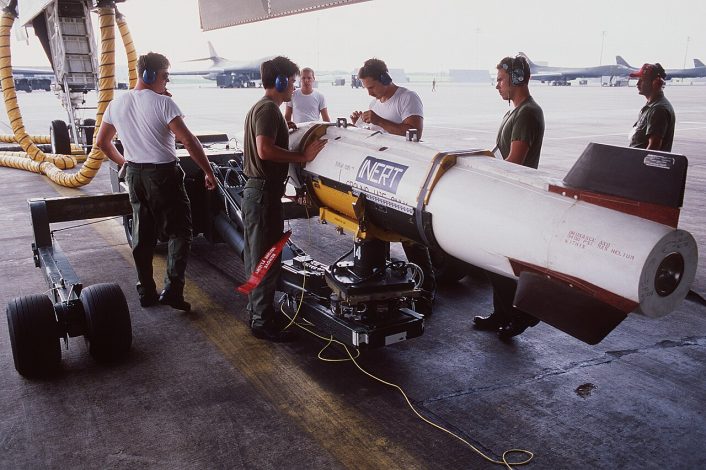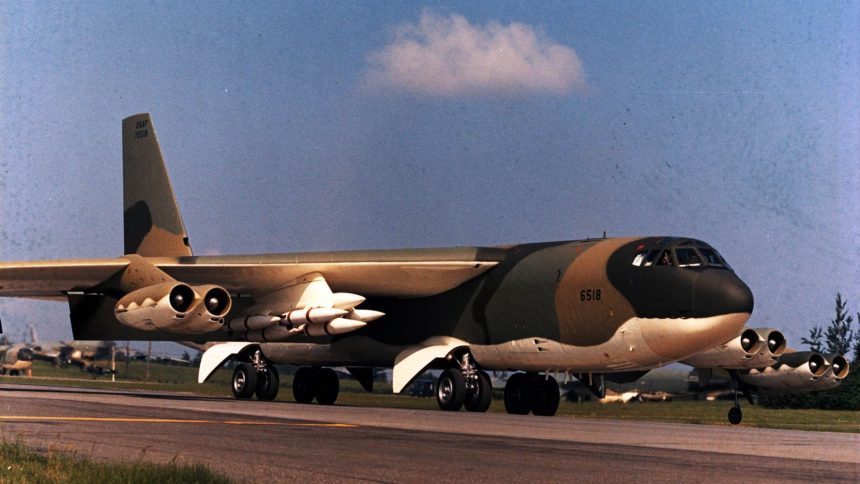Originally designed by Boeing to neutralize SAM threats and improve the survivability of SAC’s manned bomber force, the mission of the AGM-69 expanded to include selected strategic targets.
Nothing but a Hound Dog
Developed during the 1950s, the United States Air Force (USAF) Strategic Air Command (SAC) AGM-28 (Air-to-Ground Missile) Hound Dog was a rather large missile and could only be carried in pairs on Boeing B-52 heavy bombers and only with all other weapons removed. These Hound Dog-armed bombers had the mission of destroying Soviet surface-to-air (SAM) missile capabilities and other air defense systems to allow other B-52s to reach their strategic targets.
The Hound Dog was a supersonic nuclear-armed cruise missile stand-off weapon. Intended as a short-term stand in, the Hound Dog was to be replaced by the AGM-48 Skybolt air-launched ballistic missile (ALBM). However, the cancellation of the Skybolt in Dec. 1962 meant the Hound Dog would continue serving until a new replacement came into service. The AGM-28 would soldier on until 1975.
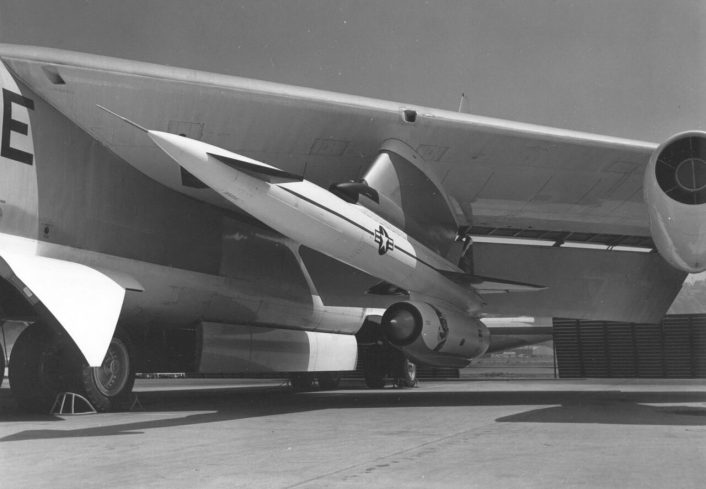
SRAM Development
With the large size of the Hound Dog allowing a B-52 to only carry two without any other weapons, the B-52 would not have enough firepower to neutralize enough Soviet air-to-ground threats to insure the aircraft would reach its intended target. With the need of a smaller weapon that could be carried in larger numbers to fulfill the mission of the Hound Dog, work began on the design in 1963 by Boeing ahead of an official request. SOR-212 (Statement of Requirement) was issued in Mar. 1964 requesting design of a new missile, resulting in the establishment in Mar. 1965 of WS-140A (Weapons System), the designation that would become the AGM-69. Boeing was awarded the development contract in Oct. 1966 to produce the AGM-69 SRAM (Short-Range Attack Missile).
In Dec. 1967 a dummy SRAM was dropped from a B-52 and live flight testing began in 1969. Technical issues and delays pushed production to 1971 with the missile finally entering service in 1972. A total of forty initial test launches were conducted from 1969 to 1971 at White Sands Missile Range, New Mexico. The tests revealed the missile exceeded range requirements, accuracy requirements, was reliable and had a tiny radar cross-section. The missile performed so well that the initial mission of suppression of Soviet air defenses was expanded to include secondary objectives of hitting selected strategic targets as well. This greatly increased the firepower of the U.S. strategic bomber fleet. By July 1975, a total of 1,500 missiles had been built.
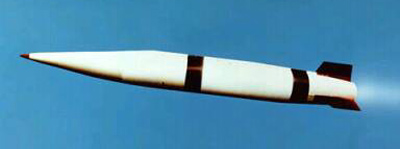
SRAM Specs
The production SRAM, the AGM-69A, would carry a nuclear warhead in the 170-200 kiloton range at speeds around Mach 3. Propulsion was from Lockheed SR75-LP-1 two-stage solid-fueled rocket motor. Range was up to 110 miles. The AGM-69 was 14 ft in length with a diameter of 17.5 in, and weighed in at 2,230 lb.
The B-52 G and H models could carry six SRAM’s externally on each wing pylon and an eight-round rotary launcher, resembling a giant revolver speed-loader, was mounted internally, increasing the bomber’s capacity from the original two Hound Dogs to now twenty AGM-69s. The Rockwell B-1B bomber could carry three of the rotary launchers for a total of twenty-four missiles.
The first live firing of a SRAM from an operational B-1B was on June 3, 1987. The General Dynamics swing-wing FB-111 could carry two missiles internally and four externally under the wings. All externally mounted SRAMs would have a tail fairing fitted to reduce drag during supersonic flight of the aircraft. The tail fairing added almost two feet in length and was blown away during rocket ignition.
Covered entirely with .8 in of soft rubber for radar absorbency as well as to dissipate heat, the SRAM had three tail fins made of phenolic resin which also helped lower the radar signature. The guidance system had an inertial navigation system as well as radar altimeter. This allowed the autonomous missile to either use a terrain-following path or be launched semi-ballistically or combinations thereof.
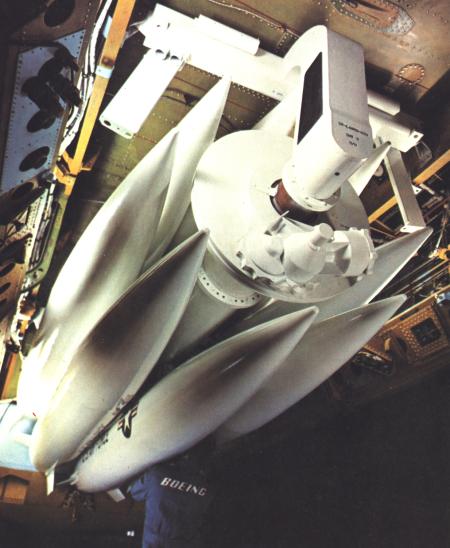
SRAM Service Life
The AGM-69A SRAM served the USAF SAC forces during the Cold War years of 1972-1993. In 1980, concerns over the fire safety of warheads were raised, and in 1990 the missiles were removed from service for inspection. During the safety checks, it was apparent a several solid rocket motors were developing cracks, making them dangerous to launch. The Air Force worked to replace the motors with upgraded long-life Thiokol motors.
AGM-69 missiles were in service at Loring Air Force Base (AFB), Maine, Pease AFB, New Hampshire, Mather AFB, California, Dyess AFB, Texas, McConnell AFB, Kansas, Grand Forks AFB, North Dakota, and Ellsworth AFB, South Dakota, before being withdrawn from service in 1993. Concerns over the solid-fuel motors cracking and improvements in ballistic missiles as well as the collapse of the Soviet Union had ended the program.
An upgraded version, known as the AGM-69B, was proposed but cancelled by President Jimmy Carter in 1978 along with the B-1A bomber. Plans for an anti-radar version as well as air-to-air version were also being envisioned. When the B-1B was resurrected by President Ronald Reagan, a new SRAM II, known as the AGM-131, was under development but cancelled by President George Bush in 1991.
